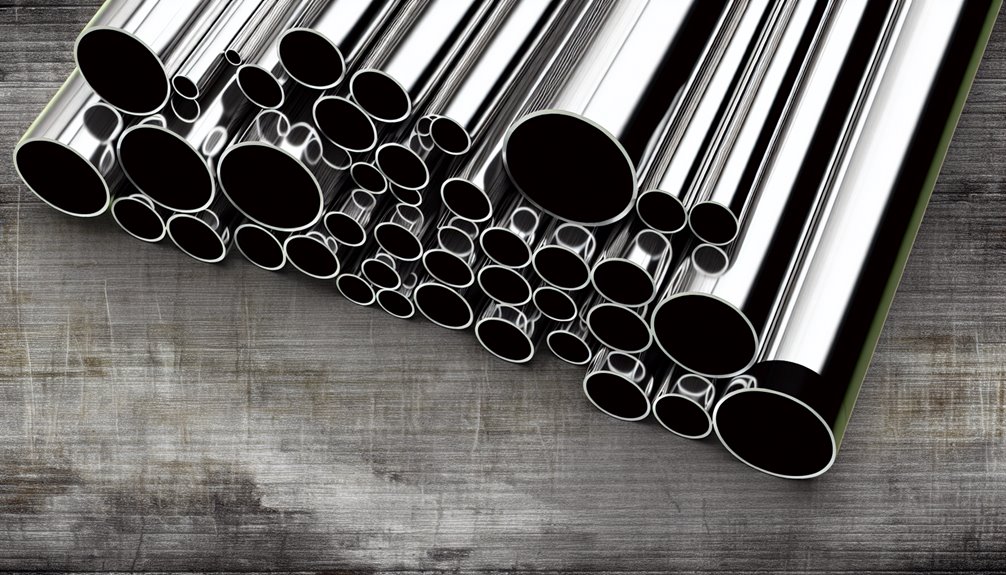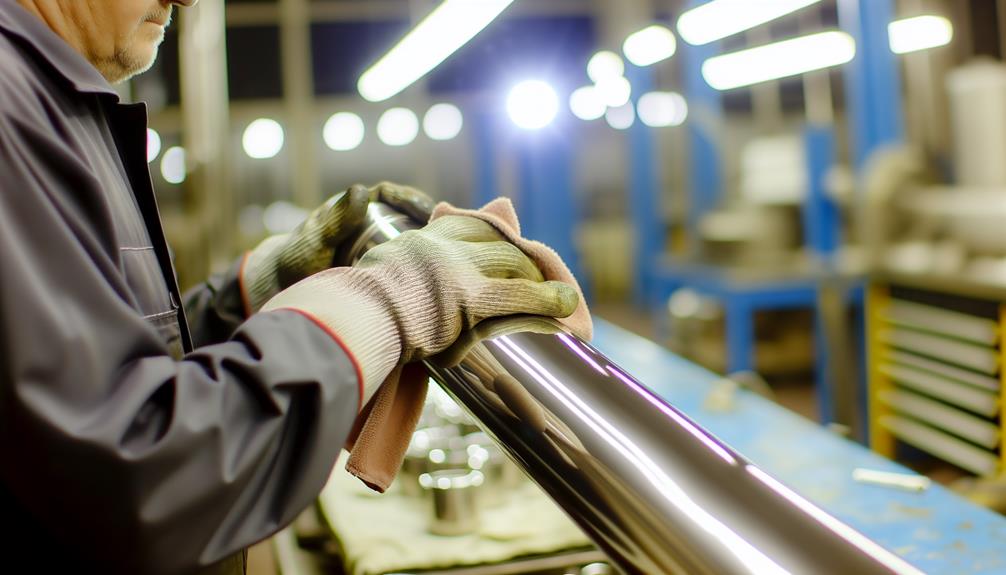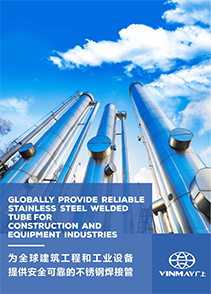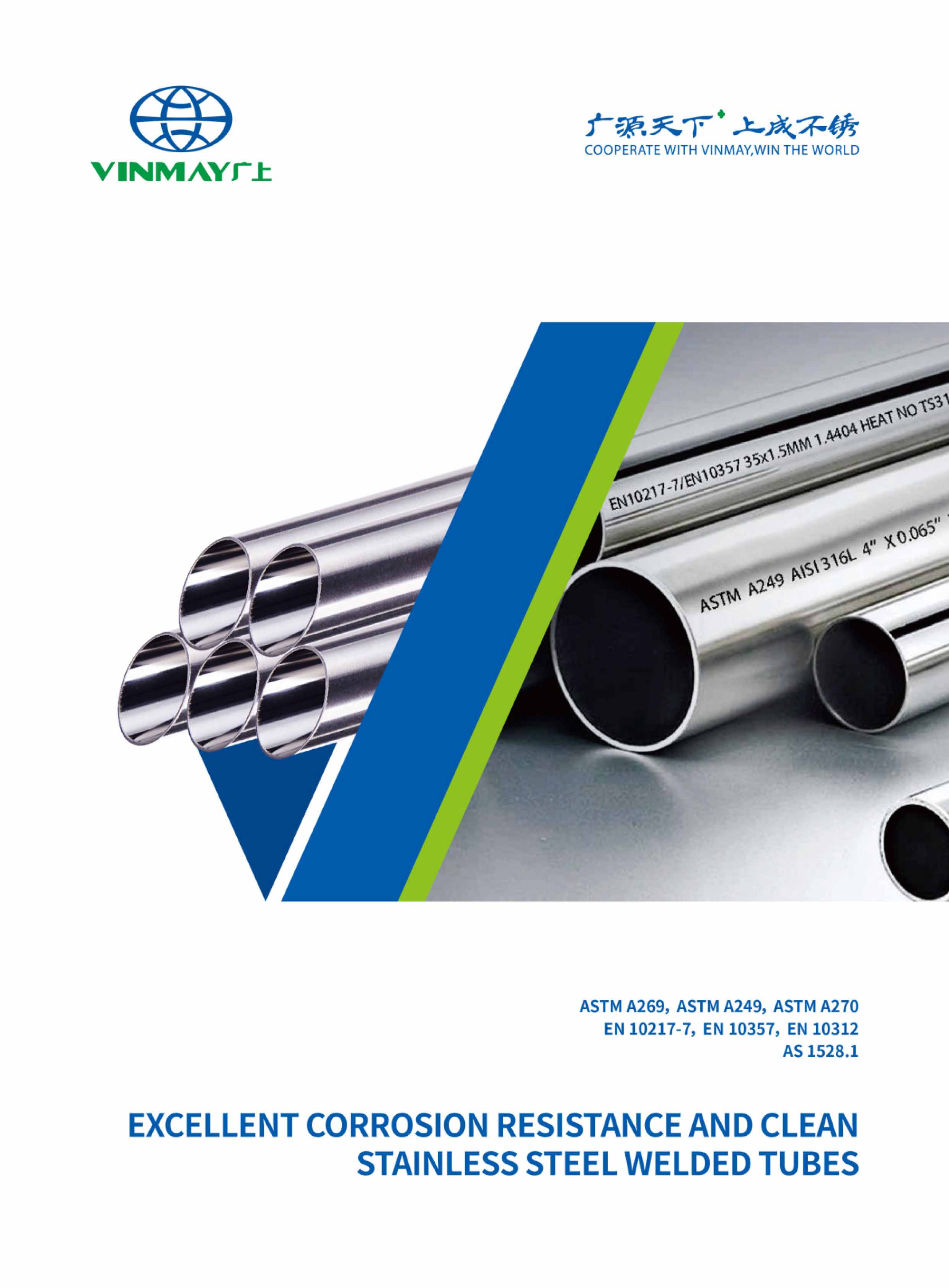Thin wall stainless steel tubing features a reduced wall thickness compared to its diameter, maintaining strength and flexibility. It is ideal for industries such as aerospace, automotive, and medical devices due to high precision, lightweight design, and corrosion resistance. Manufacturing involves tubing extrusion, cold drawing, and welding, adhering to international standards like ISO 9001. Exploring the nuances of its applications, advantages, and sourcing can enhance understanding of its vast potential in various sectors.

Thin wall stainless steel tubing represents a cornerstone of modern industrial applications. These specialized tubes feature wall thicknesses significantly less than standard tubing options. The typical wall thickness ranges from 0.5mm to 1.5mm, depending on the application requirements.
Thin wall tubing offers remarkable advantages in various industries. The reduced wall thickness does not compromise structural integrity. Modern manufacturing techniques ensure these tubes maintain excellent strength-to-weight ratios.
Thin wall stainless steel tubing refers to tubes with wall thicknesses below standard specifications. The American Society for Testing and Materials (ASTM) provides comprehensive guidelines for these products. ASTM International defines various standards for stainless steel tubing.
Wall thickness typically ranges between:
These specifications vary based on outer diameter and application requirements. Precision manufacturing ensures consistent dimensions throughout the length of the tube.
Crafting thin wall stainless steel tubing involves a meticulous manufacturing process that guarantees precision and quality. The process begins with tubing extrusion, where stainless steel is forced through a die to achieve the desired diameter and wall thickness. This method secures uniformity and structural integrity.
Following extrusion, the tubing undergoes critical finishing procedures to enhance its mechanical properties and surface finish.
Key steps in the manufacturing process include:
Each step is essential, guaranteeing the tubing meets stringent industry standards. Vinmay specializes in welded tube manufacturing with state-of-the-art equipment. Our advanced welding technology ensures perfect seam integrity.
Versatility characterizes the application of thin wall stainless steel tubing across various industries, serving as a vital component in numerous technical systems.
In automotive applications, these tubes are valued for their lightweight yet robust properties, enhancing fuel efficiency and vehicle performance.
The medical devices sector benefits from the tubing's corrosion resistance and biocompatibility, essential for surgical instruments and implants.
Aerospace components rely on thin wall stainless steel tubing for its strength-to-weight ratio and resistance to extreme temperatures, ensuring reliability in demanding environments.
In food processing, the tubing's hygienic properties and ease of sanitation make it indispensable for transporting liquids and gases. The Food and Drug Administration maintains strict requirements for materials in food contact applications. Vinmay's sanitary tubes meet these standards with proper certifications.
Each industry leverages the unique attributes of thin-wall stainless steel tubing to optimize performance and meet stringent standards.

Thin wall stainless steel tubing offers a multitude of advantages that make it an indispensable choice for various engineering applications. Its lightweight design enhances efficiency by reducing structural load while maintaining strength and durability.
Engineers and designers appreciate its versatility and adaptability in complex systems. The inherent corrosion resistance of stainless steel guarantees longevity and reliability even in aggressive environments, reducing maintenance costs and downtime.
Key advantages include:
These factors make thin wall SS tubing a preferred solution in sectors ranging from aerospace to chemical processing.
While adhering to international quality standards and compliance regulations is critical for guaranteeing the reliability and safety of thin wall stainless steel tubing, it also bolsters its acceptance across global markets.
Such adherence necessitates rigorous alignment with ISO 9001, ASTM, and EN standards, guaranteeing dimensional accuracy, corrosion resistance, and mechanical properties. Compliance certifications, including CE marking and ASME qualifications, further validate the product's quality and conformity to industry norms.
| Category | Standard | Full Name / Description |
|---|---|---|
| ASTM Standards | ASTM A554 | Specification for welded stainless steel mechanical tubing. Used in structural and ornamental applications. |
| ASTM A270 | Specification for seamless and welded austenitic stainless steel sanitary tubing. Designed for food and dairy processing. | |
| ASTM A249 | Specification for welded austenitic stainless steel boiler, superheater, heat exchanger, and condenser tubes. | |
| ASTM A269 | Specification for seamless and welded austenitic stainless steel tubing for general service. | |
| European Standards | EN 10217-7 | Welded stainless steel tubes for pressure purposes. Covers tubes for use under pressure and corrosive environments. |
| EN 10296-2 | Welded circular stainless steel tubes for mechanical and general engineering purposes. | |
| EN 10088 | Specification for chemical composition and mechanical properties of stainless steels. | |
| ISO Standards | ISO 9001 | Quality Management System standard ensuring consistent product quality and continual improvement. |
| ISO 14001 | Environmental Management System standard promoting sustainable manufacturing practices. | |
| Industry-Specific | 3-A Sanitary Standards | U.S.-based standards ensuring hygienic design for food, dairy, and beverage equipment. |
| ASME BPE | American Society of Mechanical Engineers - Bioprocessing Equipment standard, used in pharmaceutical and biotech sectors. | |
| NACE Standards | Standards by the National Association of Corrosion Engineers. Focus on materials performance in corrosive environments. | |
| Marine Certifications | Includes standards like DNV, ABS, and Lloyd’s Register for stainless steel used in marine and offshore applications. | |
| Regulatory Compliance | CE Marking | Certification indicating that a product meets EU safety, health, and environmental protection requirements. |
This meticulous compliance framework guarantees that tubing meets stringent requirements for diverse applications, from aerospace to pharmaceuticals.
By implementing thorough quality management systems, manufacturers not only enhance product integrity but also gain competitive advantages, facilitating smoother market entry and customer trust globally.
The commitment to international standards and compliance certifications is indispensable in maintaining high manufacturing excellence.

Selecting the appropriate thin wall stainless steel tubing necessitates careful evaluation of material grade to guarantee compatibility with specific mechanical and chemical requirements.
Surface finish options must be considered to meet both aesthetic and functional criteria, particularly in environments where corrosion resistance and hygiene are paramount.
Additionally, dimensional considerations and environmental factors are critical in optimizing performance and longevity, requiring an understanding of the application's operational conditions and constraints.
Choosing the appropriate material grade for thin wall stainless steel tubing is a critical decision that hinges on various technical factors. It requires an analytical approach to evaluate the material properties and perform a grade comparison to guarantee peak performance.
The following considerations are paramount:
Selecting the correct grade guarantees the tubing meets specific operational requirements.
Material grade selection plays a foundational role in determining the performance of thin wall stainless steel tubing, but the surface finish is equally significant in influencing both aesthetics and functionality.
The polished finish enhances corrosion resistance and offers a reflective surface, ideal for applications demanding superior appearance and hygiene, such as in pharmaceutical and food processing industries.
Conversely, a matte finish reduces glare and fingerprints, providing a subdued, non-reflective surface suitable for industrial environments where visual discretion is prioritized.
The choice between a polished finish and a matte finish impacts not only the visual appeal but also the maintenance requirements and wear resistance of the tubing.
Hence, precise specification of the surface finish is critical to optimizing the overall performance and longevity of the tubing.
When determining the appropriate dimensions for thin wall stainless steel tubing, several important factors must be assessed to guarantee peak performance in specific applications.
Precision in dimensional tolerances and wall thickness is paramount to confirm compatibility with engineering specifications and operational requirements.
These considerations are essential for achieving a durable and efficient tubing system tailored to precise engineering demands.
While selecting thin-wall stainless steel tubing, evaluating environmental factors is essential for guaranteeing long-term performance and durability. A key consideration is the sustainability impact of the tubing material.
Stainless steel is renowned for its high corrosion resistance, reducing the need for frequent replacements and thereby minimizing environmental strain. In addition, its inherent durability contributes to extended service life, enhancing sustainability credentials.
The recycling potential of stainless steel is significant, as it is 100% recyclable without degradation of quality, promoting circular economy practices. Additionally, choosing stainless steel with a high recycled content can further diminish the ecological footprint.
Evaluating these factors guarantees that the chosen tubing aligns with environmental responsibility goals, balancing performance requirements with eco-conscious considerations.
The cost considerations of thin wall stainless steel tubing are influenced by factors such as material grade, manufacturing process, and required specifications.
A thorough long-term value assessment is essential to evaluate the performance benefits against initial costs, ensuring ideal investment.
Implementing cost-saving strategies, such as bulk purchasing or optimizing the design for material efficiency, can greatly enhance the economic feasibility of using stainless steel tubing in various applications.
Understanding the pricing of thin wall stainless steel tubing requires a meticulous examination of cost considerations and value analysis. Several factors influence pricing dynamics, including:
Evaluating the long-term value of thin wall stainless steel tubing involves a thorough analysis of both cost considerations and intrinsic value. This process necessitates appraising the investment potential by comparing initial expenditure against lifecycle benefits.
Stainless steel tubing's corrosion resistance and durability translate into lower maintenance costs and extended service life, enhancing its value proposition. Furthermore, its high recyclability contributes to sustainability, an essential factor in modern engineering practices.
The upfront cost may appear significant, but when amortized over its operational lifespan, its economic viability becomes evident. Decision-makers must weigh these factors meticulously, recognizing that long-term savings and performance reliability underscore its superior investment potential.
Ultimately, this extensive evaluation underscores thin wall stainless steel tubing as a prudent choice for strategic infrastructure development.
Building upon the evaluation of long-term value, identifying cost-saving strategies in thin wall stainless steel tubing involves an analytical consideration of both cost implications and the resulting value.
Effective strategies encompass a multi-faceted approach:
Employing these strategies, stakeholders can achieve a strategic balance between cost efficiency and product excellence.
In sourcing thin wall stainless steel tubing, meticulous evaluation of manufacturers is vital to guarantee compliance with quality and performance standards.
Adequate documentation, including material certifications and traceability records, is essential for maintaining product integrity throughout the supply chain.
Additionally, global supply chain considerations, such as lead times and logistical challenges, must be addressed to optimize procurement efficiency and cost-effectiveness.
How does one navigate the complexities of sourcing thin wall stainless steel tubing from reputable manufacturers? A strategic evaluation of manufacturers is essential.
First, assess the manufacturer's reputation by examining their history of reliability and client feedback.
Second, guarantee robust quality assurance processes are in place, such as compliance with industry standards and quality certifications.
Finally, consider the manufacturer's ability to consistently meet precise specifications and delivery requirements.
Key Evaluation Criteria:
A thorough understanding of documentation requirements is essential when sourcing thin wall stainless steel tubing, ensuring alignment with best practices. Documentation standards play a critical role in verifying the material specifications, manufacturing processes, and quality assurance protocols.
Suppliers must provide extensive documentation that includes certificates of compliance, material test reports, and traceability records. These documents confirm adherence to compliance requirements, ensuring that the tubing meets industry standards such as ASTM or ISO.
An analytical approach to reviewing documentation enables the identification of discrepancies or non-conformities, thereby mitigating risks in the supply chain. Precision in documentation facilitates seamless communication between stakeholders and aids in maintaining the integrity of the sourcing process.
Ultimately, rigorous documentation practices empower procurement professionals to make informed decisions with confidence.
When steering through the complexities of global supply chains, procurement professionals must meticulously evaluate sourcing best practices to guarantee ideal outcomes.
Addressing supply chain risks and logistics optimization is vital for the seamless acquisition of thin wall stainless steel tubing. A systematic approach confirms that sourcing strategies are both resilient and efficient.
Key considerations include:
Through these strategic practices, firms can enhance their control over supply chain dynamics, guaranteeing consistent product availability and competitive advantage.

Ensuring the maintenance and longevity of thin wall stainless steel tubing is critical for maximizing its functional lifespan and performance.
Implementing preventive measures effectively mitigates potential issues, ensuring operational excellence. Conducting routine inspections is paramount to identify early signs of wear or corrosion, which may compromise structural integrity.
Key maintenance strategies include:
Additional Resource:
Curiously, the manufacturing process involves forming and welding, coinciding with the need for precision. Material properties like corrosion resistance and tensile strength are paramount, ensuring the tubing meets stringent industry standards for reliable performance and structural integrity.
The production of stainless steel tubing involves sustainability concerns due to significant production emissions. Energy-intensive processes and raw material extraction contribute to environmental impacts, necessitating measures to reduce carbon footprint and enhance recycling to mitigate these effects.
Recycling processes for stainless steel leverage advanced sustainability practices, allowing materials to be efficiently reclaimed. Through precise sorting and melting, thin wall stainless steel tubing can be reintegrated into production cycles, ensuring reduced waste and resource conservation.
The current inquiry examines thermal conductivity and insulation properties of various materials. Stainless steel's moderate thermal conductivity offers less insulation compared to specialized materials like foam or fiberglass, impacting its efficiency in applications demanding high thermal resistance and minimal heat transfer.
Read More: Stainless Steel Tubing Materials Comparison
Custom order timelines for precision-engineered products can stretch like a marathon, influenced by production factors such as material availability and complexity. Typically, these timelines range from 4 to 12 weeks, contingent on manufacturing intricacies and demand fluctuations.
Thin wall stainless steel tubing offers a unique combination of strength, precision, and versatility, making it essential across industries like pharmaceuticals, sanitation, and energy. While sourcing and corrosion resistance pose challenges, international standards and proper material selection ensure long-term reliability.
At Vinmay, we manufacture tubing to meet these technical requirements, backed by certifications, rigorous testing, and global support.
Need help selecting the right tubing? Get in touch—we're here to provide technical guidance and practical solutions for your projects.



